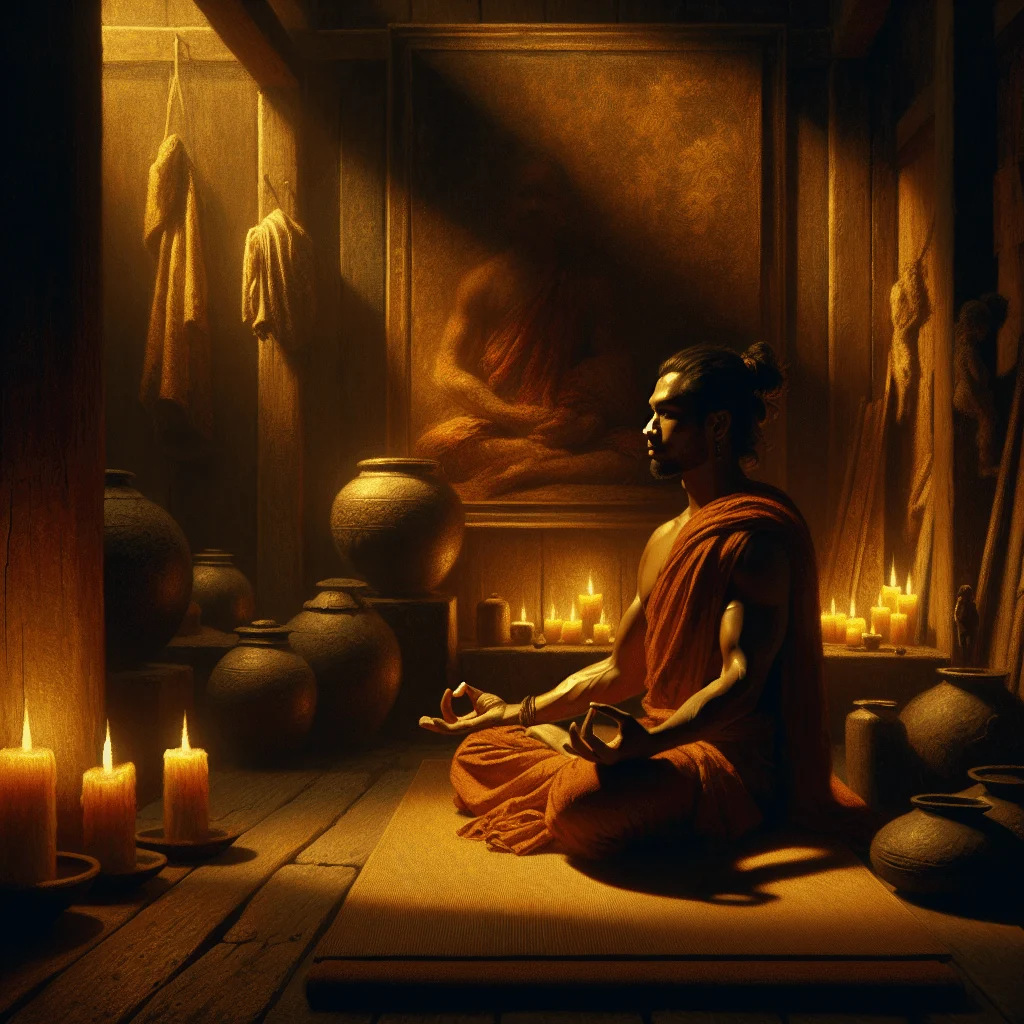Understanding Different Hand Positions for Meditation
Meditation is more than just sitting quietly. It’s an ancient practice deeply rooted in cultural and spiritual traditions around the world. For many practitioners, posture and breath are essential. But one often-overlooked aspect is the use of different hand positions for meditation, also known as mudras. These subtle gestures can significantly deepen your practice by influencing your mindset, energy flow, and overall experience.
Whether you’re a beginner or a seasoned meditator, understanding the significance of each hand position can help you choose the one that best suits your intention for the session. By integrating mudras into your practice, you give yourself another tool to focus your mind and enhance your spiritual connection.
Ready to build a consistent and meaningful meditation practice? Start your journey with our easy-to-follow resource: Everyday Calm: A Beginner’s Guide to Daily Meditation.

What Are Mudras and Why Do They Matter?
Mudras are symbolic hand gestures commonly seen in Hinduism, Buddhism, and yoga. They serve a variety of spiritual and energetic purposes. While they may seem like simple finger movements, each mudra is believed to stimulate various parts of the brain or body, promoting inner calm, awareness, and energy balance.
According to yogic philosophy, our hands act as energy portals. By manipulating their position, you can unlock specific health and mental benefits. Some mudras are designed to improve concentration, while others may enhance emotional balance or even aid physical healing.
This concept is not purely anecdotal. Studies in neuroscience are beginning to support the idea that hand gestures can affect neural activity and focus, providing practical benefits for mental health practitioners and meditators alike (Wikipedia – Mudra).
Top Hand Positions for Meditation You Can Practice Today
1. Gyan Mudra – The Mudra of Knowledge
This is perhaps the most iconic hand position in meditation. To perform it, touch the tip of your index finger to the tip of your thumb, while keeping the other three fingers extended.
Benefits: Improves concentration and memory, stimulates the root chakra, and balances the Vata (air) element in the body.
This mudra is especially effective when paired with mindfulness techniques, as described in our guide Mindfulness Meditation for Beginners.
2. Chin Mudra – For Consciousness and Receptivity
In Chin Mudra, the palms face upward, and the hand gesture is similar to Gyan Mudra. It’s often used during morning meditation practices.
Benefits: Enhances energy flow, promotes clarity, and opens you to spiritual guidance.
3. Dhyana Mudra – The Gesture of Meditation
This traditional Buddhist mudra is commonly seen in statues of meditating Buddhas. To perform it, place both hands on your lap, right hand on top of the left, with thumbs lightly touching to form a triangle.
Benefits: Deepens concentration and gives a sense of calm and introspection.
4. Anjali Mudra – The Gesture of Respect
Also known as ‘prayer hands,’ this gesture involves pressing both palms together in front of your heart.
Benefits: Encourages humility, gratitude, and a deep connection with your inner self.
It’s also the perfect mudra for intention-setting rituals and can be beautifully complemented by readings on prayer and meditation benefits.
5. Prana Mudra – The Mudra of Life
Touch the tip of your little and ring fingers to the tip of your thumb. The other fingers remain extended.
Benefits: Boosts vitality and awakens dormant energy by activating the root chakra.
6. Apana Mudra – Detoxification and Release
Touch the tips of your middle and ring fingers to your thumb tip, keeping the remaining fingers extended.
Benefits: Aids in physical purification and emotional release, making it ideal for stress-relief sessions.
This hand position is especially useful during grounding meditation for anxiety.
When and How to Use Different Mudras

Although any hand position can be practiced anytime, pairing the right mudra with the right intention or goal can offer amplified benefits. For instance, use Dhyana Mudra when you need deep focus during long sessions and Prana Mudra when you feel low energy or disconnected.
Some people also choose specific mudras during chakra meditations. If you are practicing meditation for opening the heart chakra, Anjali Mudra may be particularly effective because it centers energy around the heart space.
Tips to Get the Most Out of Your Mudra Practice
- Be consistent: Just like any other aspect of meditation, mudras require practice to yield results.
- Don’t force it: If certain finger positions feel unnatural or cause discomfort, modify them as needed.
- Use with breath and mantra: Combining breath awareness and mantra chanting can heighten the benefits.
- Start simple: Beginners can keep it straightforward by starting with Gyan or Chin Mudra.
Common Misconceptions About Mudras
People often see mudras as “just hand positions.” However, their effects are more profound. It’s not about the shape—but the intent and energy you bring to them. Some also believe that one must hold the gesture for a long period to gain benefits. In reality, even 5 minutes during a meditation session can make a noticeable difference.
Additionally, while certain mudras are associated with physical healing, they should never be treated as a substitute for medical care. Instead, consider them a complementary practice, just like yoga or aromatherapy.
Expanding Your Practice Further
Including mudras is just one way to enrich your meditative journey. Exploring other techniques—like candle gazing, affirmation-based meditations, or guided scripts for specific emotions—can help you deepen your awareness. Feel free to explore articles like Meditation Script for Anxiety and Benefits of Candle Gazing to build a more personalized routine.

Conclusion: Small Gestures, Big Impact
The beauty of using different hand positions for meditation lies in their simplicity and power. Small, intentional changes in how you position your hands can lead to meaningful shifts in your state of mind and spiritual alignment. Experiment with different mudras, listen to your body, and allow your practice to grow organically.
As you move forward, remember that meditation is a personal journey. Allow yourself the freedom to explore, adjust, and grow. And if you’re ready to align your inner energy with your desires, check out our transformative guide: Manifest Your Dreams: A Practical Guide to the Law of Attraction.
Want to explore more on mindful living? Check our Mindfulness & Meditation and Spirituality & Inner Work categories for more inspiration.

